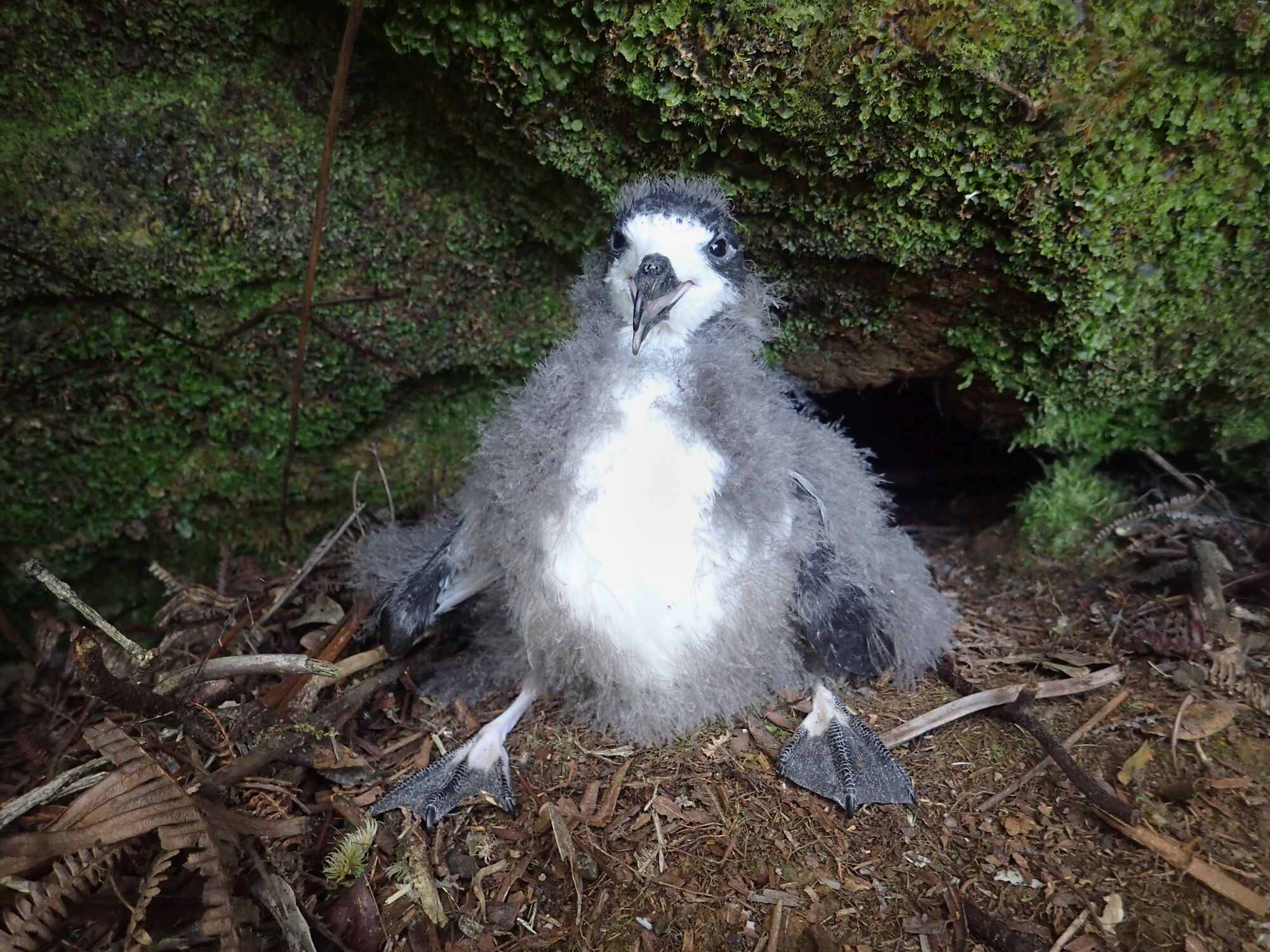Hawaiian Electric Co. and Maui County Face Lawsuit to Protect Imperiled Hawaiian Seabirds
Conservation groups demand action to stop harm to seabirds from power lines and streetlights
Contact
Conservation Council for Hawai’i and American Bird Conservancy, represented by Earthjustice, have notified Hawaiian Electric Company (HECO) and Maui County that they face possible litigation challenging harm to imperiled Hawaiian seabirds caused by power lines and streetlights on Maui and Lāna‘i. The Endangered Species Act (ESA) requires the conservation groups to provide this written notice at least 60 days before filing a lawsuit to put an end to HECO’s and the County’s illegal conduct.
Collisions with power lines and interactions with artificial lights injure and kill endangered ‘ua‘u (Hawaiian Petrels), threatened ‘a‘o (Newell’s Shearwaters), and endangered ‘ake‘ake (Band-rumped Storm-petrels). HECO owns and operates power lines and operates streetlights on the islands of Maui and Lāna‘i, while Maui County owns the streetlights that HECO operates and dictates the terms of their operation. The conservation groups seek to compel HECO and the County to obtain “incidental take” permits for the harm their operations inflict on these species, as the ESA requires. As part of the permitting process, HECO and the County must develop and implement “habitat conservation plans” that include measures to minimize seabird injuries and deaths from their operations and to offset any unavoidable harm.
“These native seabirds are part of Hawai‘i’s unique natural and cultural heritage, and we can’t afford to lose any more of them to power lines and streetlights,” said Jonee Peters, Executive Director of Conservation Council for Hawai‘i. “It’s long past time for HECO and the County to take responsibility for the death and injury that their operations inflict on these birds and to do what’s needed to avoid and offset harm.”
The seabirds fly to and from their inland nests at night. While they can detect and avoid natural obstacles like trees and rocky outcroppings, they have a difficult time navigating around power lines strung across their flight paths. Acoustic sensors deployed on high-risk power lines on Maui in 2022 detected over 200 potential collisions with ESA-listed seabirds in less than four months. Lowering power lines, as well as deploying deflectors along power lines (similar to what is done to make power lines more visible to aircraft) can reduce the number of collisions. Undergrounding power lines can eliminate collisions.
“HECO has known for decades that its power lines harm these birds, and it’s clear what are some of the most dangerous lines,” said Brad Keitt, Oceans and Islands Director for American Bird Conservancy, which sponsored the 2022 acoustic monitoring project. “We’ve called on HECO to put necessary protective measures in place, but so far, very little progress has been made to stop these unnecessary bird deaths.”
Attraction to bright lights is another major threat to the continued survival and recovery of the Hawaiian Petrel, Newell’s Shearwater, and Band-rumped Storm-petrel. The seabirds, which use the moon and stars to navigate to sea, will fly toward and circle an artificial light source, becoming disoriented and exhausted to the point that they collide with structures or fall to the ground. Once grounded, seabirds are susceptible to starvation, dehydration, predation, and vehicles on roadways.
“The law requires HECO and Maui County to do their best to avoid killing and injuring these endangered and threatened seabirds, and now is the time to do it,” said David Henkin, an Earthjustice attorney who represents the conservation groups. “The ongoing work to reassess and reconfigure utility infrastructure in the wake of Maui’s 2023 wildfires presents a unique opportunity to develop and implement strategies to protect both the public and imperiled wildlife.”
Background
The Maui Nui Seabird Recovery Project (MNSRP) and other seabird researchers have documented fourteen collisions of ESA-listed seabirds with HECO’s power lines on Maui and Lāna‘i since 2010, but that number is only the tip of the iceberg. Studies of power-line collisions involving these same species on Kauaʻi concluded that, even when there are dedicated searches for downed birds, the searches underestimated total collisions by 78-88% due to injured birds moving outside of the underline search area. There are no dedicated searches on Maui and Lāna‘i, so the actual numbers of collisions are likely orders of magnitude higher than the documented take. Since 2009, MNSRP has also documented scores of unauthorized take of ESA-listed seabirds that likely resulted from attraction to lights at HECO facilities or County-owned and HECO-operated streetlights on Maui and Lāna‘i. Again, due to the lack of dedicated searches, the actual toll on imperiled seabirds is undoubtedly much higher.

Additional Resources
About Earthjustice
Earthjustice is the premier nonprofit environmental law organization. We wield the power of law and the strength of partnership to protect people's health, to preserve magnificent places and wildlife, to advance clean energy, and to combat climate change. We are here because the earth needs a good lawyer.